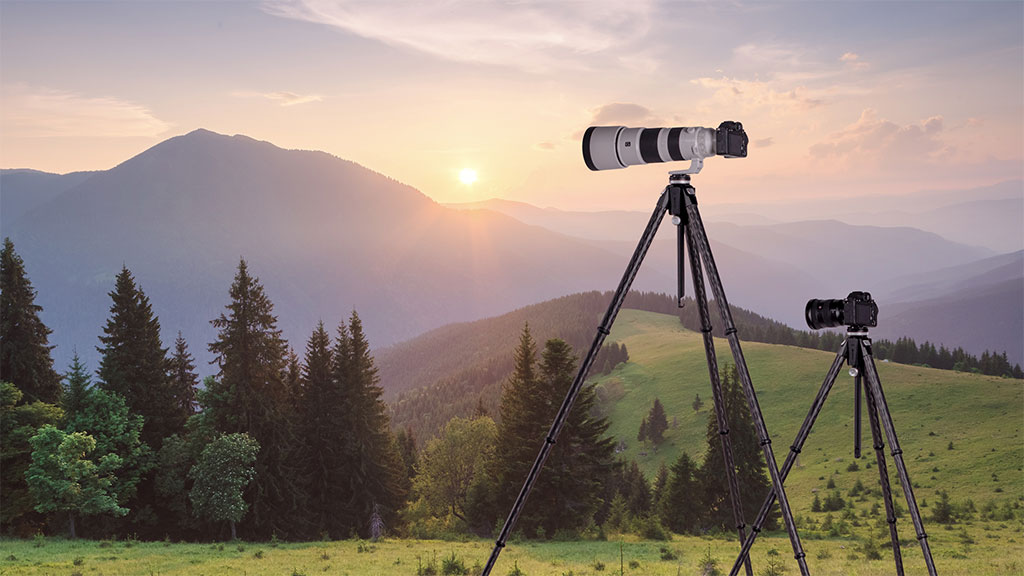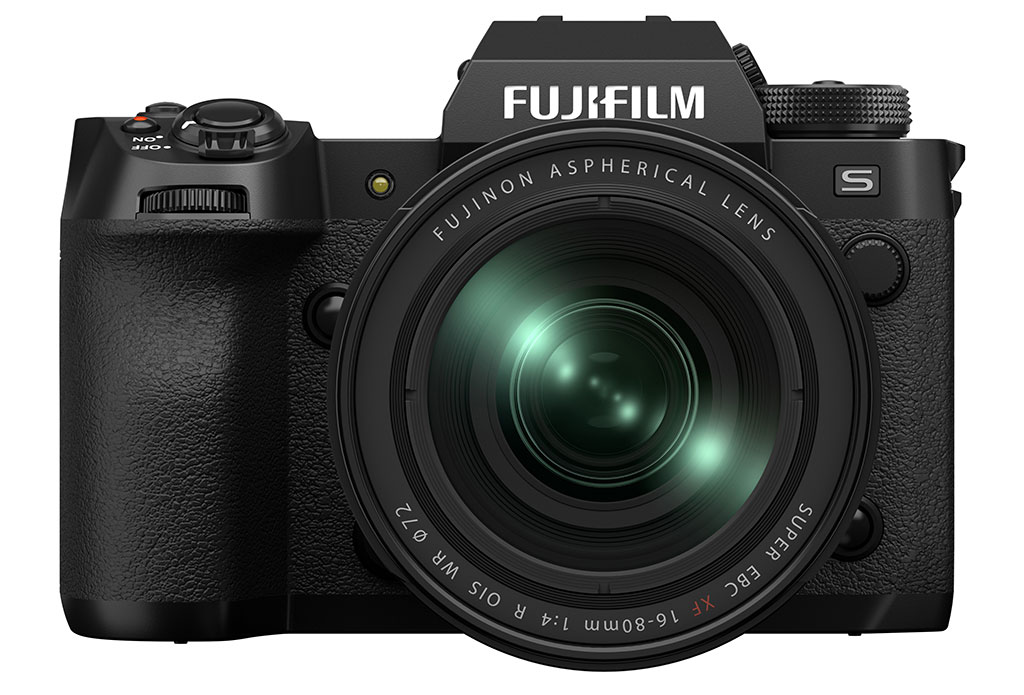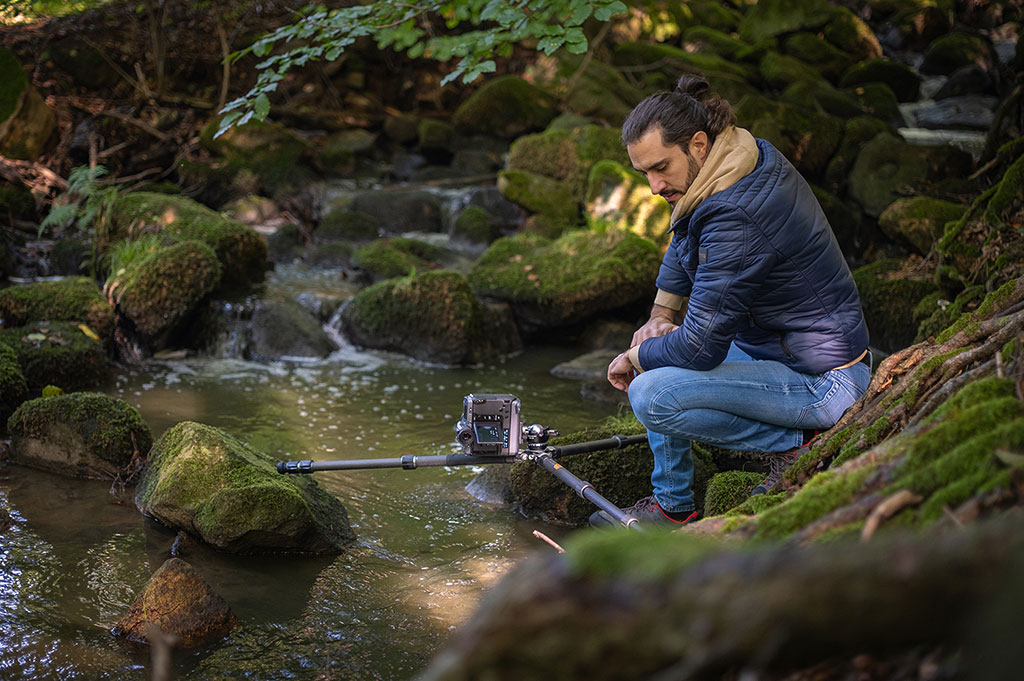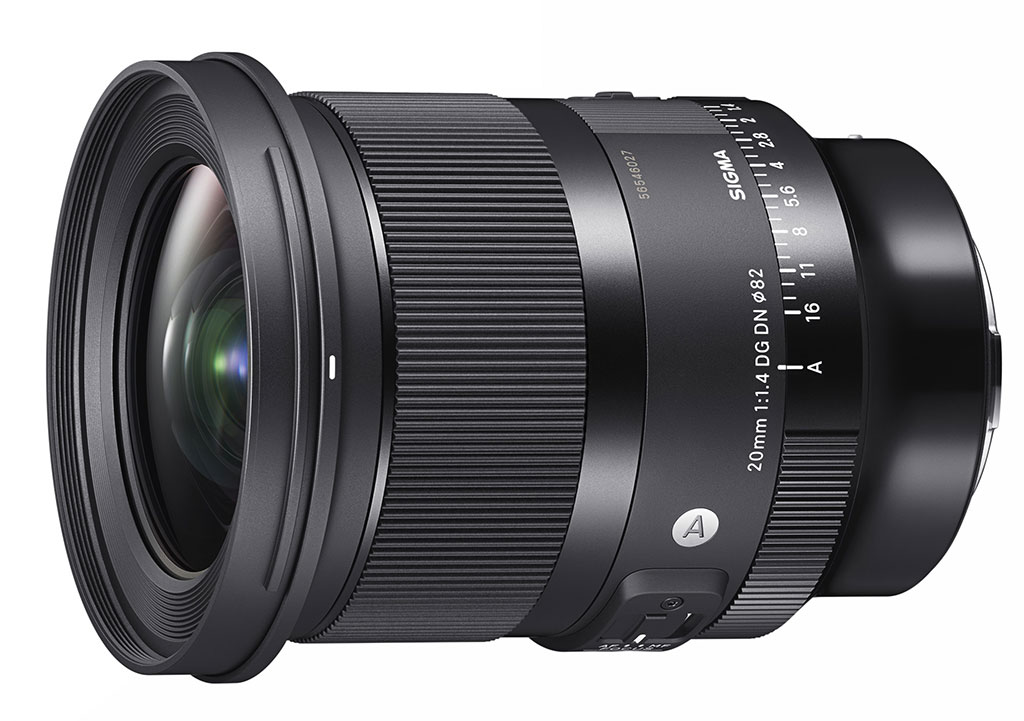Advertisement
Advertisement
Read Next

How An Auto-Leveling Tripod Makes Life Easier For Photographers
Getting your tripod level can be...
Fujifilm X-H2S Review
Read our review of the X-H2S to find...
5 Reasons To Buy A High-Quality And Adjustable Tripod
Shopping for a tripod can be confusing....
Sigma 20mm F1.4 DG DN Art Lens Review
Nobody else makes a lens like the Sigma...Advertisement


It’s More Than The Camera
We asked a number of top landscape photographers about their essential gear—the equipment they always want to have with them—for doing their work. In addition to equipment like lenses and tripods, we were particularly interested to know what non-photo gear these talented photographers consider to be necessary for their photography, as well as their main sources of inspiration. The answers here give you a sense of what the very best rely on to get their incredibly evocative landscape photos.
RICHARD BERNABE (www.richardbernabe.com)
LEE Big Stopper 10-Stop ND Filter: As a photographer who really enjoys the ethereal look of super-long exposures, the LEE Big Stopper is a filter I carry with me every time I venture afield. Whether it’s turning raging seas into foggy stillness or blurring slow-moving clouds, the Big Stopper is indispensable to this landscape photographer.
Timer Remote/Intervalometer: This is more than just a remote release cable to mitigate camera shake during exposures in the “danger zone” (0.5 to 2 seconds, when the camera is most vulnerable to camera shake). An intervalometer can be programmed for specific shutter speed times in Bulb mode, as well as a precise number of consecutive exposures. For long exposures in low-light conditions and night photography, this is an invaluable piece of equipment for me.
Photoshop: Okay, I’ll say it, even if nobody else dares to do so. Photoshop is absolutely essential when it comes to artistic interpretation of a photographic scene. This is particularly true for landscape photographers. Exposure blending has replaced graduated ND filters because the process does a better job of re-creating the dynamic range that the eye sees. Focus stacking allows us to attain extreme depth of field without incurring resolution-robbing diffraction at small apertures. And Photoshop can help re-create the color and drama of an outdoor experience that we, the photographer, saw and felt so that our viewers can vicariously experience it, as well.
SEAN BAGSHAW (www.OutdoorExposurePhoto.com)
16-35mm Zoom: I really like my current camera and assortment of lenses, but if I had to choose the single piece that has helped make some of my favorite images, it would be the Canon 16-35mm ƒ/2.8L II lens. The lens is very sharp for a zoom and has a wonderful wide-angle range. I often compose my near-far perspective landscapes at the 16mm focal length. The edges of the frame have more sharpness and less vignetting than other wide-angle zooms I’ve owned. I find I can use very small apertures for extreme depth of field while still maintaining good image clarity. The large 82mm diameter bezel allows me to use a regular-thickness polarizer without it showing up in the corners of images taken at 16mm; 16mm lenses with 77mm diameters require a special thin polarizer to avoid this problem. As a bonus, when stopped down to ƒ/22, it gives one of the cleanest and most pleasing sunstars of any lens out there. In addition to creative wide-angle landscapes and cool sunstars, at ƒ/2.8 this lens also makes a very good lens for photographing the night sky. The 16-35mm is the one lens that has made it possible to capture some of my most creative and challenging compositions.
Coffee: Perhaps my biggest photography ritual is morning coffee. Like so many outdoor photographers, I’m often up at very dark, cold hours of the morning. Whether in my truck camper or in my tent, I arrange my bed so I can fire up the stove while still in my sleeping bag. By the time the water boils, my brain is coming out of the fog and anticipating the first sip. Holding a warm travel mug of coffee in my hand as I hike into the dark, looking forward to the sunrise, is a wonderful feeling. I’ve had my insulated stainless-steel travel mug for years. It’s dented and scratched and fits my hand like a glove. It keeps my coffee hot as I hike and throughout the sunrise shoot. When empty, the mug fits neatly into a side pocket of my camera pack where it waits for a refill back at camp.
Pop-Up Camper And Tent: I do my best photography when I immerse myself in it for several days or weeks at a time. Having comfortable and reliable living quarters on multiple day trips is essential for being well rested and relaxed enough to focus on photography. When I can drive to locations, my pop-up camper, by All Terrain Campers, on the back of my truck is a minimal, but very comfortable home away from home. Now that I’m in my 40s, having a bed, stove, sink, fridge, lights and solar panel, as well as being able to stand up, really beats those days when I’d just curl up in the backseat of my car. When I go into the backcountry, I take a Big Agnes Copper Spur UL1 tent.
Critical Apps: There are many apps for the iPhone that I use to help plan my photographs. Here are some that I find particularly helpful. The Photographer’s Ephemeris and PhotoPills are both designed to help you plan where to be and when for the perfect conditions. They give real-time information on sun and moon location, twilight and rise and set times, and other useful information for any location on the planet, and at anytime, present or future. PhotoPills also has augmented reality sun- and star-tracking features, as well as calculators for hyperfocal distance, star-trail exposure times and time-lapse shooting. When I just need a simple augmented reality sun-tracking app, I use Sun Scout. Star Walk is an excellent resource for night sky photography.
GARY HART (www.EloquentImages.com)
L-plate: Adding an L-plate to my DSLR bodies was a game-changer—not only does it make vertical compositions more stable, they’re closer to eye level and just plain easier. In my workshops, I often observe photographers without an L-plate resist vertically oriented shots, either consciously or unconsciously, simply because it’s a hassle to crank their ballhead sideways, and when they do, they need to stoop more. And some heads aren’t strong enough to hold a heavy, vertically oriented camera-lens combo. But since switching to the L-plate, my decision between a horizontal or vertical composition is based entirely on the composition that works best.
GPS: My Garmin dash-top GPS is an essential travel mate. I visit many photo locations, far from home, that I’m not able to return to for a year or longer. So on each trip I save every potential photo spot in my dash-top GPS. For example, I get to Hawaii just once each year. Over the years, I’ve found so many spots to photograph—not only would it be easy to forget some, on each visit I would waste valuable time reacquainting myself. But with a GPS that travels with me, I don’t have to refamiliarize myself with anything—I just pop it on my dash before driving away from the airport and instantly navigate to my locations like a native.
JAMES KAY (www.jameskay.com)
24-105mm Lens: When I’m out in the field, I always travel fast and light. Whenever I need to pare down my gear to the basic essentials in order to save weight or bulk, this is the one lens I take with me; in fact, my Canon EF 24-105mm ƒ/4L USM was the only lens I brought with me on a recent six-week trip to New Zealand. This focal range covers 90% of what I usually use in the field.
All-Wheel-Drive Vehicle: My Nissan Xterra, with its short wheel base and high clearance, allows me to get to locations that might otherwise be inaccessible without a long, long walk. With the seats folded down, it makes for a great car-camp and base of operations.
JON CORNFORTH (www.cornforthimages.com)
Filters: I use Singh-Ray filters, and I always have them with me. From my beloved LB Warming Polarizer to my arsenal of graduated neutral-density filters in various strengths, I’m never caught without my filters when I’m shooting landscape images. Sure, there are lots of techniques to make an image these days, but nothing beats the satisfaction of getting it right in the camera.
Durable Ballheads: My Acratech Ultimate GP ballheads are the lightest that I’ve ever owned, while also being the sturdiest. I own several versions that I use on various tripods, but the oldest one I have is an original from over 10 years ago. I once knocked my tripod off of a high cliff in Utah. My tripod was pretty beat up, but not my ballhead, which just had a few dents and scratches. Good thing my camera wasn’t attached.
Energy Gels: I’m a big fan of Clif Gels when I need an energy pickup after a long hike or when I’m about to start one. If I’m tired and hungry, that can directly effect my motivation to use my camera if the conditions are less than ideal.
Cheap, Compact Umbrella: There’s no way that I can keep my camera lens dry when a double rainbow appears during a downpour or while standing too close to an ocean blowhole without it. Along with the umbrella, I also keep a plentiful supply of dry paper towels in order to quickly absorb water and spray.
Footwear For Standing In Water: If I’m in Hawaii, this means my Teva sandals, but in southeastern Alaska, I’ll be wearing my XTRATUFs. These brown rubber boots come up to my knees. You don’t want to step in water deep enough to go over the top. Believe me, that’s no fun. If I’m really going to be getting wet and crossing cold-water streams, I use my Patagonia chest waders and boots. I’ve abused these rugged waders from Alaska to South Georgia Island and have never gotten wet. I can’t say that for my companions who didn’t bring waders.
ROBIN BLACK (www.robinblackphotography.com)
Tripod: Beyond the obvious mention of camera or lenses, which can and do change and evolve over time, what doesn’t change is the following gear. A sturdy, dependable tripod is vital. Wind will kill sharpness in an image, especially with the heavier bodies and lenses most of us use. I use an Induro carbon-fiber tripod, and not only is it rock-solid for keeping my camera steady, it also survives a lot of abuse. I’m not gentle with mine. It gets banged against rocks and dragged through ice, mud and salt water—and this is generally true for anybody who shoots landscapes, so that investment is important.
Filters: I always keep a circular polarizer on my lenses when shooting outdoors, and for the last couple of years, I’ve come to depend almost entirely on the Singh-Ray Vari-N-Duo. It’s a bit of an investment for a filter, but it combines their outstanding warming polarizer—which is ideal whether I’m shooting water or the red rock of Utah—and a variable ND filter with a range of 2 to 8 stops so I can get very creative with exposure. It does vignette at the super-wide range, but I can account for that bit of lost frame when composing my shot. The benefits far outweigh that one headache, and I almost never shoot without it.
Spare Cable Release: I learned this lesson the hard way a few years ago when I was setting up to do some “blue hour” shots of the Golden Gate Bridge and discovered that my cable release had fallen out of my camera pack at some point earlier in the afternoon. I was able to get the shots I wanted, mostly by using the timer settings on my camera, but it was beyond frustrating. I’ve kept a spare (or two) cable release in my pack ever since. They’re inexpensive—about five bucks or so on Amazon or eBay—so just buy a few and keep them handy.
LED Flashlight: My keychain-sized LED flashlight has saved me more times than I can count—it’s my third-level backup in case my headlamp or flashlight (or both) die on me in the dark. Just a week or two after purchasing my first one, I ended up using it on the hike down from Delicate Arch after sunset (not a stroll you want to take in the dark!). My headlamp battery died just steps down the trail when I started the hike out, and I’d left my flashlight in the car. The little LED light I’d tucked into a side pocket on my camera bag was all I had to see my way down the unmarked slickrock, and I’d have been lost—perhaps literally—without it.
CHUCK KIMMERIE (www.chuckkimmerle.com)
Tilt-Shift Lenses: I shoot a lot in areas that are quite flat, such as the Plains, therefore maximizing depth of field is very important. I shoot Nikon and have the 24mm, 45mm and 85mm lenses. Also, as these are manual-focus lenses, they force me to slow down a bit. Autofocus makes it all too easy to rush.
Loupe: I may consider my Hoodman loupe my second most important piece of gear, after the camera. It not only allows me to check critical focus, which is important when using tilt-shift lenses, but also to study the composition, tonality and potential problem areas in my photos.
Proust: I live by Marcel Proust’s quote “The real voyage of discovery consists not in seeking new landscapes, but in having new eyes.” I’ve made some of my strongest images in North Dakota and the Plains states, places not usually thought of as photographic destinations. While it has become a bit of a cliché, I firmly believe that amazing images can be found in the most reticent and quiet of landscapes. It has become popular for photographers to do destination photography—Zion, Arches, Antarctica, the Oregon Coast, etc.—but doing so actually inhibits creativity.
Microfiber Cloths: I carry four or five small microfiber cloths. They’re great for cleaning lenses or camera eyepieces, and work very well absorbing errant water and raindrops that may get on the lens. Having many different ones allows me to always keep one that’s clean and dry.
JIM SCHOEMAKER (www.jimshoemakerphotography.com)
Tripod: I use a Gitzo GT5561SGT carbon-fiber tripod. Doing landscape work requires a rock-solid platform to mount my camera on, and this tripod can support everything from my 35mm camera mounted with a 600mm ƒ/4 lens to my large-format view camera. It doesn’t have a center column so I can collapse it to seven inches above the ground or extend it to nearly nine feet tall, which comes in handy not only in the studio, but in the field, as well. It seems like I’m always shooting on some ridiculously uneven ground or steep incline, and those long legs can extend to compensate for just about every type of terrain. The best part is, if I get lost in the wilderness, I can extend it to its full height, tie some pine branches to it and have a shelter for the night!
My iPod: My broad-brimmed Tilley hat and Asolo hiking boots are essential, of course, but it’s my iPod that keeps me going. It goes everywhere with me. It keeps me awake on long drives through the middle of the night and gives me inspiration while I’m shooting. I have my ear buds in a lot when I’m shooting. When I first arrive on location, I like to listen to the natural sounds of the area, whether it’s birds, insects, the wind through the trees, whatever. It helps give me a sense of the place, and after I feel comfortable with it, it’s time to put on the music and select something appropriate for the subject. It could be rock ‘n’ roll, it could be classical. It’s like adding a soundtrack to a movie. Plus, the ear buds act as a deterrent to the people who are constantly asking, “What lens is that?” I dislike talking about gear while I’m photographing.
Mountain Dew: It may kill me in the long run, but in the short term, it keeps my eyes open when I’m doing marathon drives. Last summer, I covered nine states, plus parts of Alberta, Canada, in just over three weeks. I put just shy of 11,000 miles on my truck. Considering that I’m shooting during sunrise, sunset and anytime the light is good, that leaves only the middle of the day or night to drive, and that leaves even less time for sleep. The sugar and caffeine prevent me from waking up with my truck upside down in a ditch.
IAN PLANT (www.ianplant.com)
Neutral-Density Filters: Long exposures are a great way of showing the world to people in a way that they don’t typically see. During long exposures, moving elements of the scene, such as water, clouds or wind-blown foliage, take on abstract forms, and the result can be a dreamy look. I always carry 3-, 5- and 10-stop ND filters with me, depending on how much I need to slow down time. These give me the option of exposure times ranging from several seconds to several minutes.
Remote Control: My Canon Remote Switch RS-80N3 is critical for my landscape work. It allows me to trigger the shutter without creating vibrations and to perfectly time an exposure for an incoming or outgoing wave when working on the shoreline. The remote lock, used in conjunction with the camera’s Bulb setting, allows me to take exposures longer than 30 seconds (the camera’s maximum). The Remote Switch is absolutely necessary when I’m trying to capture a fleeting moment or make images with a dreamy look.
Watch Alarm: Believe it or not, my ultimate (and only) inspiration is the alarm feature on my watch. Even when I’m exhausted from long days of travel and shooting, and I don’t feel like dragging myself out of bed early in the morning, my watch is always there to remind me—in the most shrill way possible—that life is short, and I had better get my ass out there so I don’t miss something amazing!
Sat Phone: Safety is a concern when working alone in wilderness areas. That’s why I always carry an Iridium Extreme 9575 satellite phone in case of emergencies. No matter where I am, with Iridium’s global network, I can always stay in touch with friends, family and professional colleagues so I can keep my business running even when spending a week or two in the wild.
Folding Kayak: I like to go places other people don’t, and my Feathercraft K1 Expedition folding kayak is perfect for literally getting off the beaten path. My K1 can handle just about anything, and I can pack it to the gills with photo and camping gear for long expeditions. And, because it folds, I can take it with me to exotic locations by commercial airliner. My Feathercraft was essential to photographing sandstone sea caves on Lake Superior, over 10 miles from the mainland. It helped me get deep into the caves, into places people with larger boats just couldn’t reach.
BRET EDGE (bretedge.photoshelter.com)
Camera Pack: I spend a lot of time hiking to the locations I photograph and I don’t pack light. I need a backpack that carries all of my photography gear, plus all the necessary hiking equipment—food, extra clothing, 10 essentials, etc.—comfortably all day long. My f-stop Tilopa BC is the most comfortable pack I’ve ever worn. The suspension is built to transfer the load to your hips and it works beautifully, allowing me to carry 30 to 35 pounds in total comfort. The f-stop packs are designed for photographers so they have a padded compartment for camera gear and extra room to carry hiking gear. They’re well built with tough materials and stand up to the abuse dished out by working pros.
Jerry Garcia: One of my favorite quotes comes from the Grateful Dead’s Jerry Garcia who said, “Sometimes you get shown the light in the strangest of places if you look at it right.” That quote is always in the back of my mind when I’m out photographing, and it reminds me that I should never discount any location in any light. Some of my favorite photographs were created because I ignored my initial reaction to give up and move on when at first I didn’t think there was any potential.
Youth: My 5-year-old son inspires me in so many ways. I take him out with me as often as possible. Watching him get excited about exploring the natural world and finding something interesting about every rock, stick, leaf, flower and bug inspires me to discover beauty in ordinary, everyday things. He’s a budding photographer and has his own little Pentax camera. He’s so incredibly passionate when he shows me an image on the LCD screen and describes to me what he loves about the photo. All of his good energy rubs off on me, energizing me to keep looking and keep making photographs!
The Right Footwear: Where the 4×4 road ends, the trail begins, and that’s when my hiking boots become an important piece of gear. I’m not loyal to any one brand, though. For a while I wore Vasque, then Oboz, and now I have a pair of Adidas. I buy whatever hiking boots offer the best fit and the features I need, which always includes a sticky rubber sole that provides great traction for scrambling around on rocks.